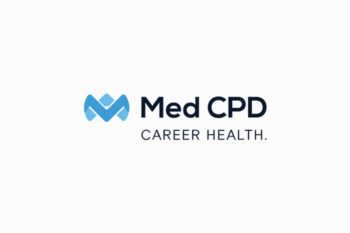Lisdexamfetamine Shortage and Public Health Challenges
April 13, 2024
The Shortage
The recent Vyvanse shortage in Australia has raised significant concerns in the medical community, shedding light on broader issues regarding public health management and the increasing demand for certain medications. Vyvanse, a crucial drug for treating Attention-Deficit/Hyperactivity Disorder (ADHD) and binge eating disorder (BED), has faced supply challenges since August of last year, with particular strengths experiencing ongoing shortages.
Takeda Pharmaceuticals Australia, the sole supplier of Vyvanse in the country, has grappled with manufacturing issues compounded by soaring demand, resulting in limited availability of 30mg, 40mg, 50mg, and 60mg capsules. While efforts have been made to resolve some shortages, such as the 30mg and 50mg strengths, challenges persist with the 40mg and 60mg variants. This situation has prompted regulatory interventions, including the approval of an overseas alternative under section 19A of the Therapeutic Goods Act 1989, albeit at a significantly higher cost.
The shortage of Vyvanse speaks volumes about the complexities of modern healthcare systems and the challenges faced in ensuring uninterrupted access to essential medications.
Is this Common?
From this crisis we can point fingers at a few key points. The shortage underscores the vulnerability of the pharmaceutical supply chain. Manufacturing delays, particularly when coupled with increased demand, can quickly lead to supply disruptions, affecting patient care and treatment continuity.
The surge in demand for ADHD medications over the past few years also reflects a growing awareness and diagnosis of ADHD, especially in both children and adults. This trend highlights the need for proactive planning and strategies to meet the evolving healthcare needs of the population. The role of regulatory bodies, such as the Therapeutic Goods Administration (TGA), is pivotal in monitoring these rises and subsequently managing drug shortages and ensuring patient safety. Collaborative efforts between pharmaceutical companies and regulatory authorities are essential to navigate such challenges effectively.
Healthcare providers, including prescribers and pharmacists, are tasked with balancing patient needs amid shortages which can be challenging. Prioritising existing patients and exploring alternative treatment options are crucial steps in mitigating the impact of supply disruptions on patient care. The introduction of an overseas alternative, while addressing immediate supply gaps, raises concerns about affordability and access for patients. The financial burden of accessing alternative medications underscores the need for sustainable pricing strategies and support mechanisms.
ADHD Surge
The rise in ADHD diagnoses over the years reflects a multifaceted phenomenon shaped by various societal and medical factors. Enhanced awareness among healthcare professionals and the general public regarding ADHD symptoms and its impact on daily functioning has led to more accurate and timely diagnoses. Additionally, improvements in diagnostic tools and criteria have facilitated a better understanding of ADHD across different age groups, contributing to increased recognition and identification of individuals with the disorder. Moreover, evolving societal norms and educational expectations have highlighted the importance of addressing ADHD-related challenges early on, prompting parents, educators, and healthcare providers to seek diagnosis and intervention for affected individuals. These combined factors have resulted in a noticeable increase in ADHD diagnoses, necessitating a proactive and comprehensive approach to managing the disorder and supporting individuals affected by it.
Additionally, the availability of effective medications like Vyvanse has contributed to the rising trend of medicated ADHD patients, providing clinicians with valuable treatment options to address the diverse needs of individuals with ADHD.
Stabilising Supply
Moving forward, addressing the Vyvanse shortage necessitates a multifaceted approach. Timely and transparent communication between stakeholders, including healthcare providers, patients, and regulatory agencies, is paramount. Regular updates on supply status, alternative options, and mitigation strategies can help manage expectations and minimise disruptions. As well as this, exploring diversified supply chains and manufacturing options can enhance resilience against supply chain disruptions. Collaborative efforts between industry players and regulatory bodies can facilitate strategic planning and risk mitigation strategies.
Proactive planning, including forecasting demand trends and expanding manufacturing capacity, is crucial to prevent future shortages. Investing in research and development, infrastructure, and workforce training can bolster the healthcare system’s ability to meet evolving healthcare needs. This comes hand in hand with prioritising patient well-being, and continuity of care should guide decision-making during drug shortages. Empowering healthcare providers with resources, guidelines, and support networks can facilitate informed decision-making and optimal patient outcomes.
Next Steps
The Vyvanse shortage underscores broader systemic challenges within the healthcare sector, ranging from supply chain resilience to patient care continuity. Addressing these challenges requires a collaborative and proactive approach, encompassing stakeholders across the healthcare ecosystem. By learning from the Vyvanse shortage and implementing strategic interventions, we can strengthen our healthcare systems and better serve the needs of patients in the future.
During the Vyvanse shortage, prescribing practitioners play a vital role in ensuring patient care continuity. GPs should prioritise ongoing patients dependent on Vyvanse while exploring alternative medications for new prescriptions, considering individual needs and treatment options. Optimising dosage regimens and educating patients about potential changes can be impactful for many, whilst monitoring supply updates closely for adjustments helps us keep a step ahead. GPs are encouraged to collaborate with pharmacists, document decisions clearly, and advocate for patient support programs to mitigate challenges during this period. Continuous learning and proactive communication are key in navigating this shortage effectively and maintaining optimal patient outcomes.












